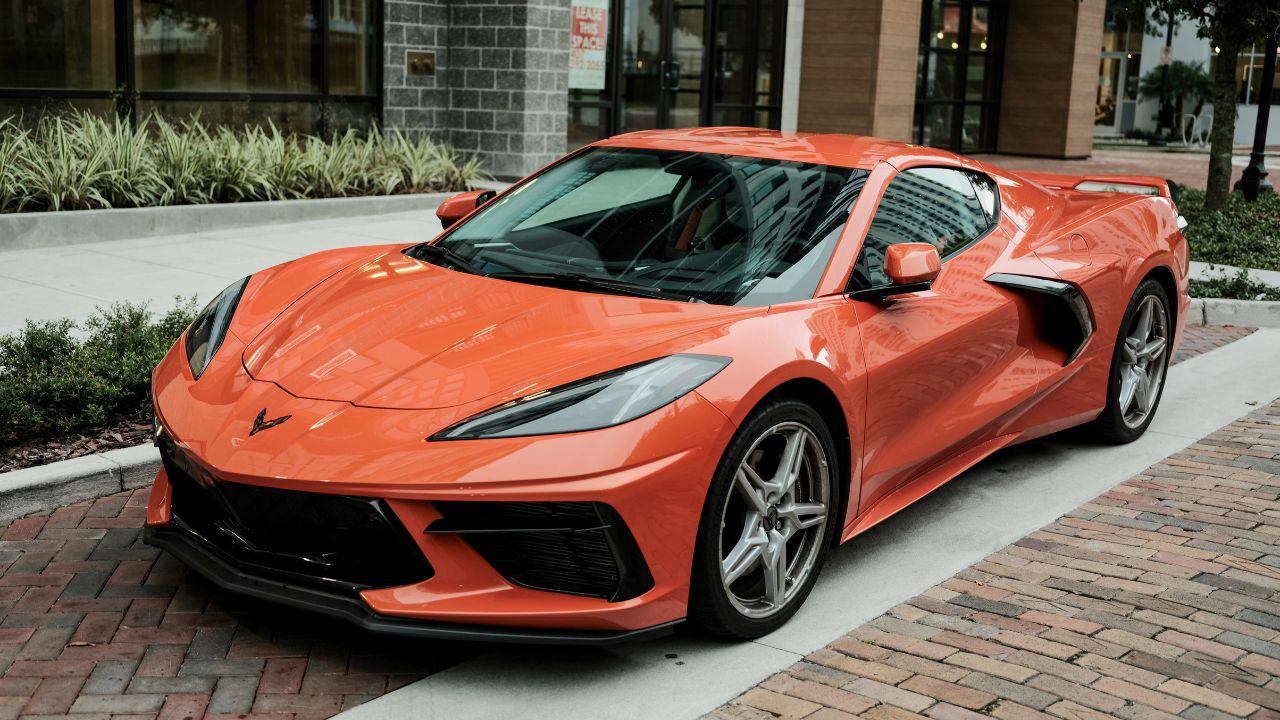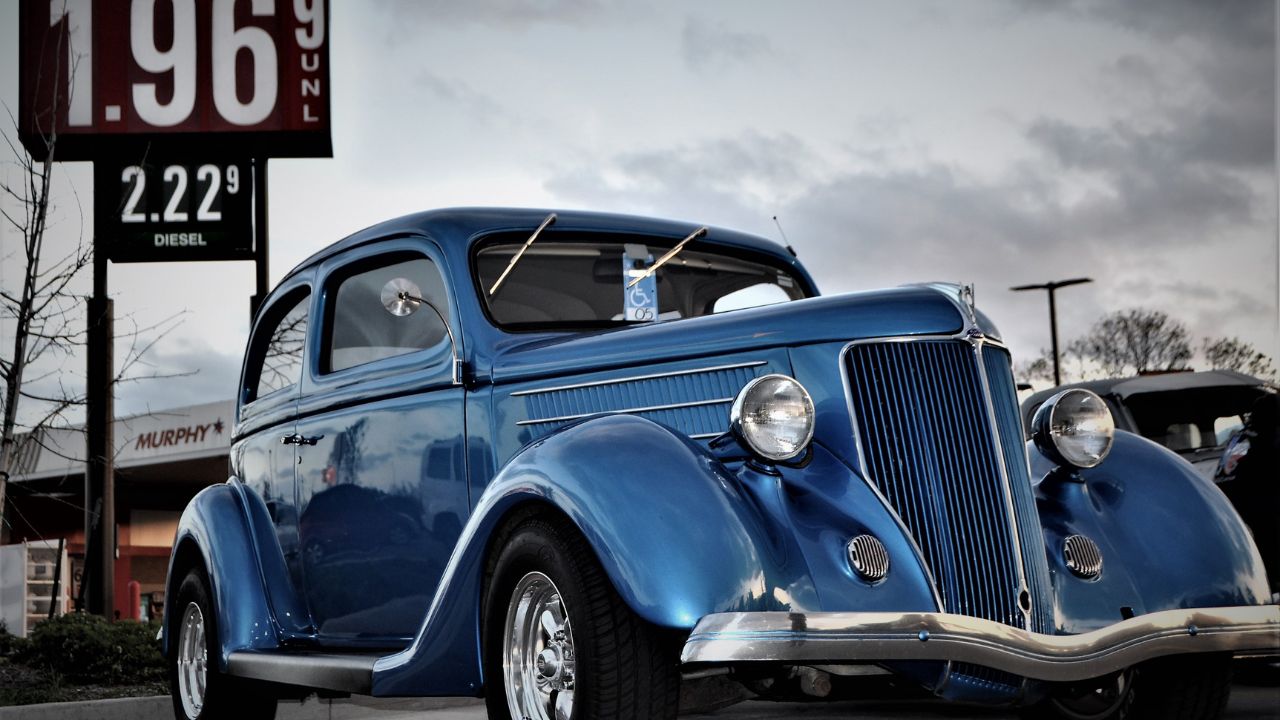
Chevelles have been seen in many different movies. Let's talk about a 1969 Chevelle, which was featured in Taledaga Nights. We also discuss a 1970 454 SS that Matthew McConaughey drove in The Ballad of Ricky Bobby. Perhaps you've seen these cars in movies where Tom Cruise drives them. However, how many of you are aware of the iconic cars that were featured in your favorite movies?
Tom Cruise's Chevelle chase
Tom Cruise plays Billy, a young car fan who drives a 1969 Chevelle SS fourspeed in the movie King of the Road. As his rival, a red-and-white-striped Dodge Charger, he drag races his '57 Chevy. While the chase continues, Billy overlooks a parked bulldozer. This scene is a classic in automotive moviemaking. A must-see for Chevelle owners.
The 1970 Chevrolet Chevelle SS was one of the most beloved muscle cars ever made. The Chevelle's LS6 454 SS engine produces 450 horsepower when combined with a 4-speed manual transmission. Tom Cruise's Chevelle SS plays a significant role in the movie. Although the car blends with the background, it exudes strength.

John Shaft's Chevelle
John Shaft's Chevelle has been featured in numerous films over the years but none are as famous as his 1971 model. Austin, Austin's car manufacturer, made four identical cars for filming. Much of the footage was shot in Atlanta, Georgia. Other scenes were filmed in New York City. Two cars were used in close-ups. While the other two were rigged to be total destruction and drifted or shot up, the third was used for full-scale filming.
Tim Story was the actor who played John Shaft II. John Shaft is based upon Ernest Tidyman's crime novel. However, it takes place in Harlem City, New York City. The action-packed film features moody lighting, 1930s-style phones and a noir atmosphere. Charles Cioffi plays a police lieutenant. The chevelle, along with other vehicles, are also iconic.
Jack Reacher's Chevelle
The 1970 Chevy Chevelle SS is the most popular car in the Jack Reacher movie series, and for good reason. It is a mechanical beast that will take on anything Jack Reacher throws at it. This movie also features one the most spectacular car chase scenes in cinema history. Jack Reacher chases the Audi A6 in his '70 Chevelle SS. This is one of the most memorable scenes from the movie. The car eventually loses control and crashes into a New Jersey barrier. The pursuing cops are baffled.
The 1970 Chevrolet Chevelle SS muscle vehicle is undoubtedly the most beloved. It introduced the LS6 454 SS engine, which has over 450 horsepower. In the movie, a Chevelle SS was cloned and professionally rebuilt to look like the Chevelle. It was later used as a chase vehicle in Jack Reacher, but the Chevelle cloned screamed power, strength, and speed.

Tom Cruise's Chevelle
A few years ago Tom Cruise's Chevelle went for approximately PS40,000. After filming finished, the actor purchased a brand new vehicle from a dealer. This car was then sold for around PS40,000 at auction. Today, the same car sells for more than PS80,000 at auction. Although it isn't known whether Tom Cruise still owns the car, many believe that it is one his most prized possessions.
The Chevelle SS is featured in Jack Reacher, a 1970s movie. Cruise drives Jack Reacher's car and uses the vehicle as both a weapon and prop in the movie. The chase becomes a motor-car derby and the car is not just for show. Cruise purchased a real SS396 in secret from a friend. Unfortunately, the model didn’t make it through the movie.
FAQ
What is the job description for a mechanic in a car?
There are three main areas of employment for car mechanics:
-
Automotive repair shops
-
Dealerships
-
Independent garages
Automotive repair shops
This is the place most people begin to consider becoming mechanics. It's actually the easiest way to start. You have two options: work in an existing shop or open your own.
If you decide to work at a shop, you'll need to apply to join a union. After being accepted into the union, the union will provide training.
Once you complete the training, it's time to get started.
Registering with the government is required if you intend to open a garage. You'll need to meet certain standards after you register.
After you register, you will be granted a license for your garage to operate.
You can sell spare parts or do minor repairs with your license. It will not permit you to fix major engine issues.
As well as selling spare parts you will need to offer advice and direction to customers.
Dealership jobs
Most dealerships employ mechanics who can specialize in a particular area of the car. For example, they might only deal with brakes or only replace tires.
Some dealerships hire general mechanics to handle all aspects of car repair.
These positions often require applicants that they undergo special training before being allowed work. This allows employers to select the most qualified candidates for their roles.
Some dealerships will even hire graduates right out of university. These graduates already have a basic understanding of mechanical engineering, so they are able to learn all about cars.
Independent garages
Independent garages do not belong to any dealership. Instead, independent garages tend to concentrate on providing high-quality services.
Independent garages are not associated with any companies so they can afford higher wages. This means that these jobs are usually more lucrative than those at dealerships.
But this doesn't mean that independent garages are necessarily better places to work. Many business owners prefer to own their businesses and not delegate the responsibility to others.
It is possible to work long hours, but not have any control over the day.
You should also expect to earn lower wages than if you were employed at a dealership.
It's possible to switch between jobs. It is possible to switch between different types of jobs if your current employer would prefer you to work at a dealer.
If you prefer to work in an independent garage, you might consider applying directly to its owner.
The bad news is that finding a new job isn't always easy. Many other factors can also influence the amount you earn.
For example, the type of vehicle you repair and whether you charge extra for labor.
How can I fix my car as a hobby?
It's a great hobby to take on if you are passionate about cars. You could repair them yourself, buy parts for them and sell them. Or just have fun with them. If you are looking for something new, this would be a great hobby.
But it is not easy to turn this into your full-time occupation. It takes a lot of dedication and hard work. It will also require a large amount of investment.
If you don't have any good reasons to be involved in cars, it may be better to just let it go.
How can I prepare for a apprenticeship as a mechanic?
It is important that you understand the ramifications of your actions. You need to understand the mechanics of cars and how they work. This way, you know where to start when you go on your first day at the garage.
You also need to know how to fix simple problems such as broken lights, tires, etc.
This article will show you how to diagnose and fix issues.
To put the pieces back together, you will also need to understand how they fit together.
Finally, you should be able use tools safely.
All of these factors will allow you to become a skilled mechanic.
What qualifications are necessary to become a truck driver mechanic?
Although you don’t have formal qualifications, you have extensive experience with engines and trucks. Your expertise is invaluable because you know how quickly and efficiently to diagnose problems.
A solid understanding of diesel technology is also a plus. This will help you understand the components that are needed to fix our vehicles.
How long does an automotive course take?
An automotive course lasts 3 years.
The first year is spent learning about cars and theory. The second year is dedicated to practical training, where you will learn how to fix cars, drive them, and do other jobs around the car. The last year is spent at a local shop, where you will get practical experience with real-world problems.
Statistics
- There were 749,900 jobs available for automotive service technicians and mechanics in 2016, which is expected to grow by six percent through 2026. (jobhero.com)
- According to the BLS, the median annual salary for automotive service technicians and mechanics in the United States was $44,050 in May 2020. (uti.edu)
- The U.S. Bureau of Labor Statistics (BLS) reports that the job outlook for automotive service technicians and mechanics is expected to decline by 4% from 2019 to 2029. (indeed.com)
External Links
How To
How to properly diagnose your vehicle for repair
First, look at the symptoms of your car to determine if it needs repair. Then, follow these steps to diagnose your vehicle properly.
-
Check engine lights. Make sure to check all dashboard indicators like the engine light indicator (oil pressure gauge), the battery indicator (battery light indicator), and the RPM indicator (rpm gauge). If they have been flashing for more days than usual, it could be a sign that something is wrong with the vehicle.
-
Pay attention to the treads on your tires. Tires with worn treads could cause problems when handling or braking. You should inspect the treads on your wheel. You should ensure that they are clean and smooth. To do this, remove the wheels and take them out. You can check the tread wear with a flashlight.
-
Observe the brake fluid level. You should always keep track of the amount of brake fluid in your vehicle. This ensures that your brakes work properly. Your brakes may fail if the brake fluid level drops.
-
Check the suspension system. The suspension system in vehicles absorbs vibrations and shocks. It improves control and allows for smoother accelerations or decelerations. A suspension problem can cause your vehicle to feel wobbly and shake uncontrollably. To test whether your vehicle has a suspension issue, try putting weight on the front or rear axle and observe the movement.
-
Examine the steering column. The steering columns are what connect the steering knob to the rest. Accidents often damage steering columns. You should replace the steering column if it is loose or weak.
-
The exhaust pipe should be observed. Exhaust pipes move gases from combustion chamber to atmosphere. You can let harmful fumes into your home if your exhaust pipes crack or leak. Additionally, your tailpipe should be fixed immediately if it is bent.
-
Take a look at the underside of your hood. If you see anything unusual, take a look under the hood. Leakage of fluids in your engine could indicate that it is leaking. In addition, if you notice an unusual smell coming from your engine compartment, you should contact a professional technician.
-
Check the air filter. The vehicle's outside environment may cause the air filter to collect dust and debris. Vehicles that have a dirty air filter will not run well. Replace your air filter regularly.
-
Check the fan belt. Your vehicle's fan belt connects the engine to the transmission. The engine will not turn if the fan belt breaks. Replacing the belt is simple. You only need a screwdriver or pliers to replace your belt.
-
You should inspect the radiator and hoses. The radiator hose carries water from the radiator to the engine. If the hose becomes damaged or cracked, hot liquid can be emitted onto the engine. To repair the hose, you will only need to use a pair needle-nosepliers and a wire brush.
-
Make sure you have the windshield wipers checked. Windshield wipers use electricity to remove snow and rain. If they stop working, streaks could be left on your glass. The solution is to change the washer fluid.
-
Make sure you check the cables. Your car's electrical system is powered by batteries. When you replace batteries, make sure to disconnect the negative cable first. Failure to do so can damage your alternator.
-
Be sure to check your headlights. Headlights are used to illuminate the road ahead. Poor visibility can result if the headlights don't function properly. You can check the bulbs to make sure they aren't burned out.
-
Check the lights. If you approach other drivers at night, lights will warn them. If one doesn't work, it could distract you and lead to an accident.
-
Make sure you check your brakes. Before you collide with another vehicle, brakes will slow down the car. You may lose control of your vehicle and crash if the brakes don't function properly.
-
Change the oil. The oil keeps your engine well lubricated. It protects metal parts and prevents them from wearing too quickly. Changing the oil every month is recommended.